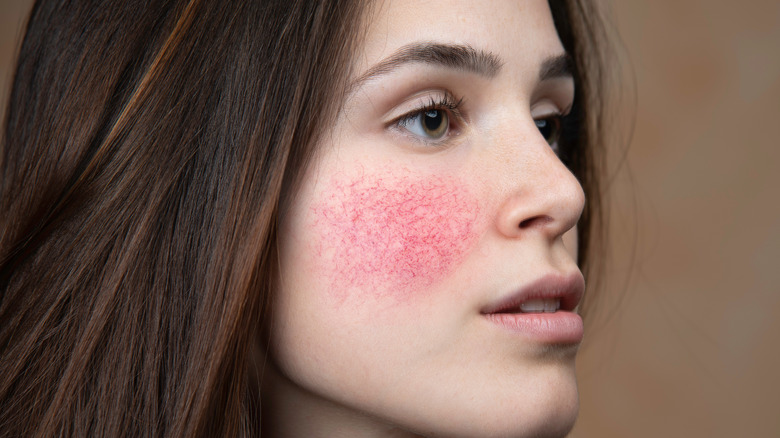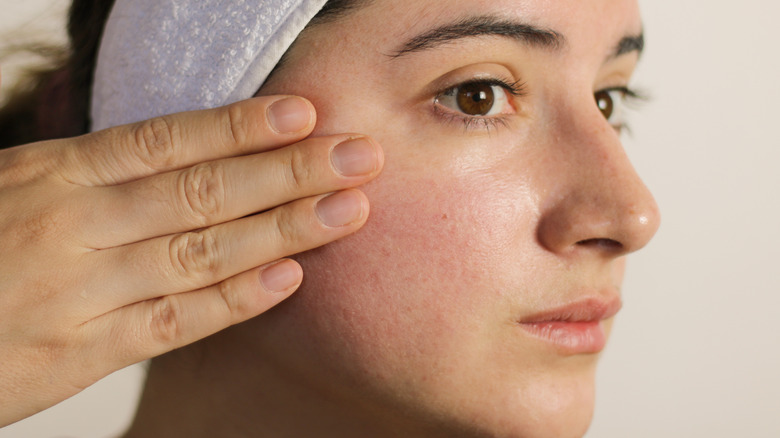How To Identify The Different Types Of Rosacea
Rosacea is a disease that causes redness, flushes, or rashes on the facial skin, according to MayoClinic. It may also make your blood vessels more prominent. The lighter the skin color, the more visible it is. At times, you might even notice pus-filled spots across the face. Usually, rosacea flares up for a few days or weeks and then vanishes on its own. The condition often resembles acne-prone skin. Unlike common acne, it can lead to severe inflammation, which may get worse after you apply water or chemical-based products, warns the National Health Service (NHS).
In a 2018 study, rosacea was found to be a fairly common disease that affects both males and females, with more than 5% of the world population being diagnosed with the condition. Scientists also discovered that rosacea cases are more frequent in middle-aged people between 45 to 60 years old. In fact, when it comes to the occurrence of rosacea within the American population, the American Academy of Dermatology Association (AADA) reported the skin condition impacted about 16 million cases in U.S. adults.
What are the types of rosacea?
Erythematotelangiectatic rosacea is a secondary type of rosacea that is usually identified by typical redness and stinging, per a 2007 study published in the Journal of American Medical Association of Dermatology. Just like the primary skin condition, erythematotelangiectatic often lasts about a month and then disappears for a while. You may also notice puffiness all across the face. Another kind of rosacea is known as papulopustular rosacea, which as the name suggests, is accompanied by small pus-filled bumps that appear red and swollen, often mistaken for acne because of their appearance and presence on the cheeks and chin (via NYU Langone Health).
The third type of rosacea is called phymatous rosacea, which causes visible changes in the structure of your facial skin (via Medscape). This includes around the nose end, forehead, chin, ears, and/or eyes. This condition is more common in males and may make the skin look bulbous and discolored. Luckily, this type of rosacea doesn't last long and may disappear after proper treatment. The last type of rosacea to keep in mind is referred to as ocular rosacea. Similar to the rest of the subtypes, ocular affects the eyes, making them inflamed, red, and puffy in appearance, according to MayoClinic. You may experience occasional skin flushes and some problems with vision such as blurry vision or grittiness, along with dry eyes.


